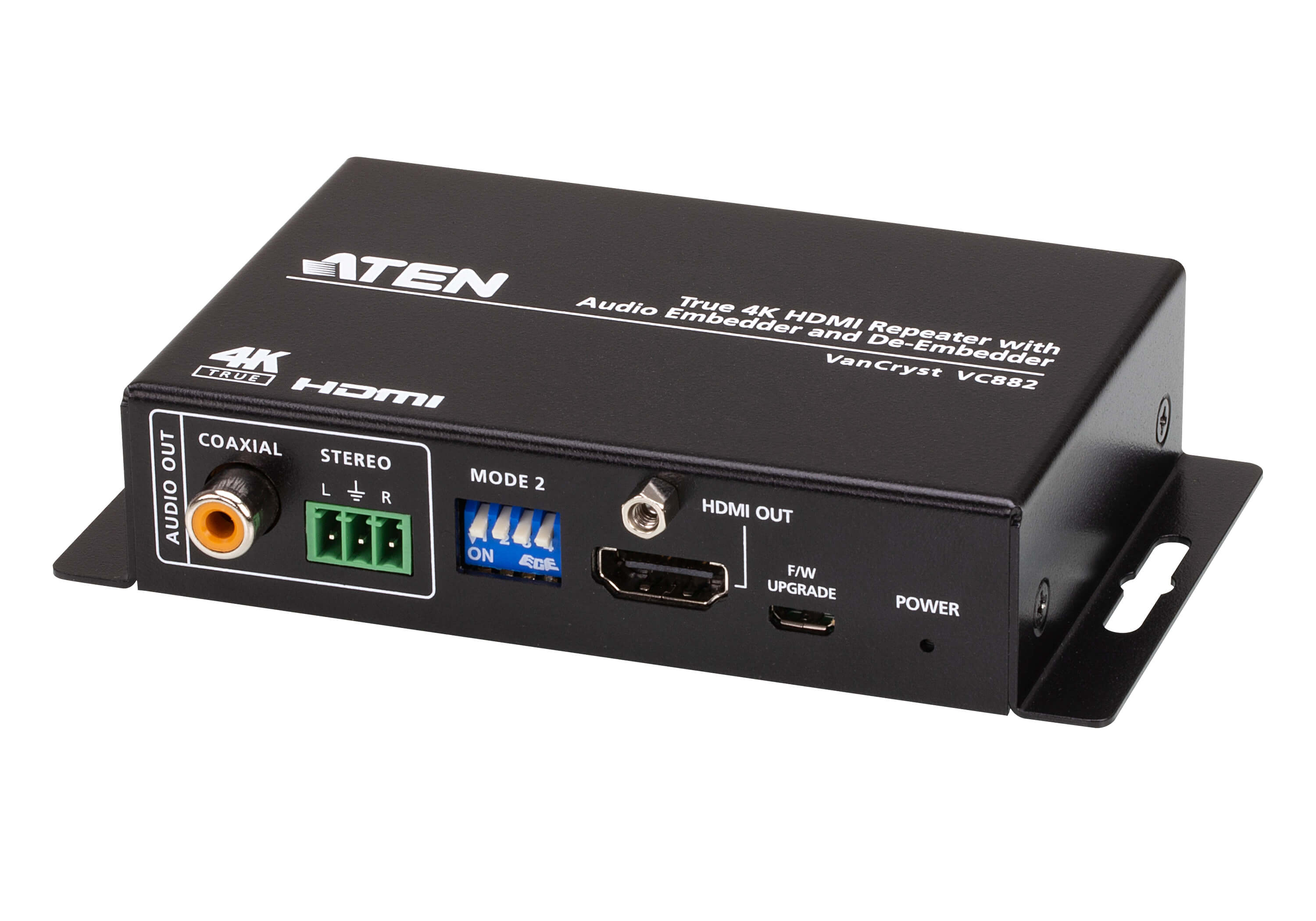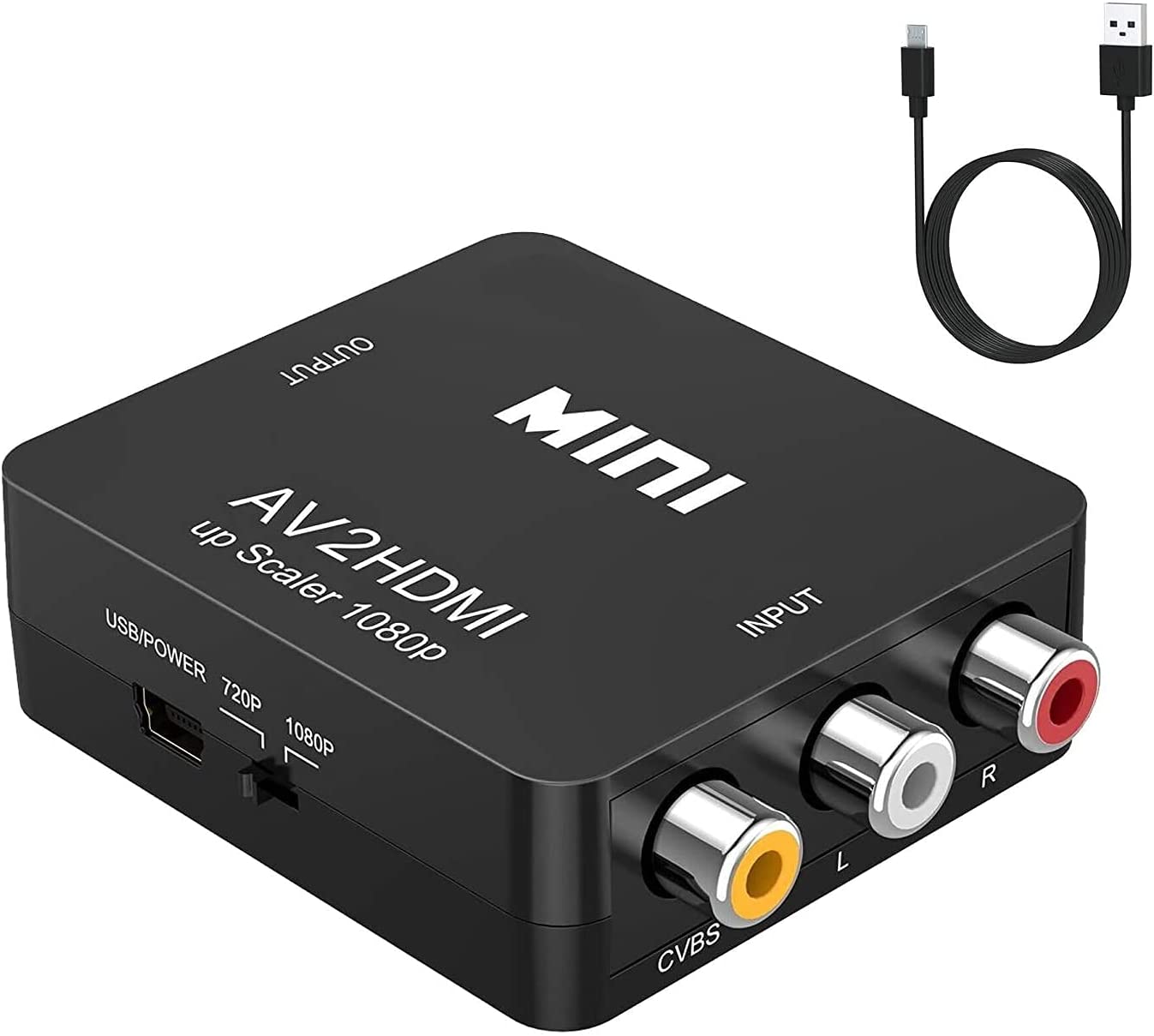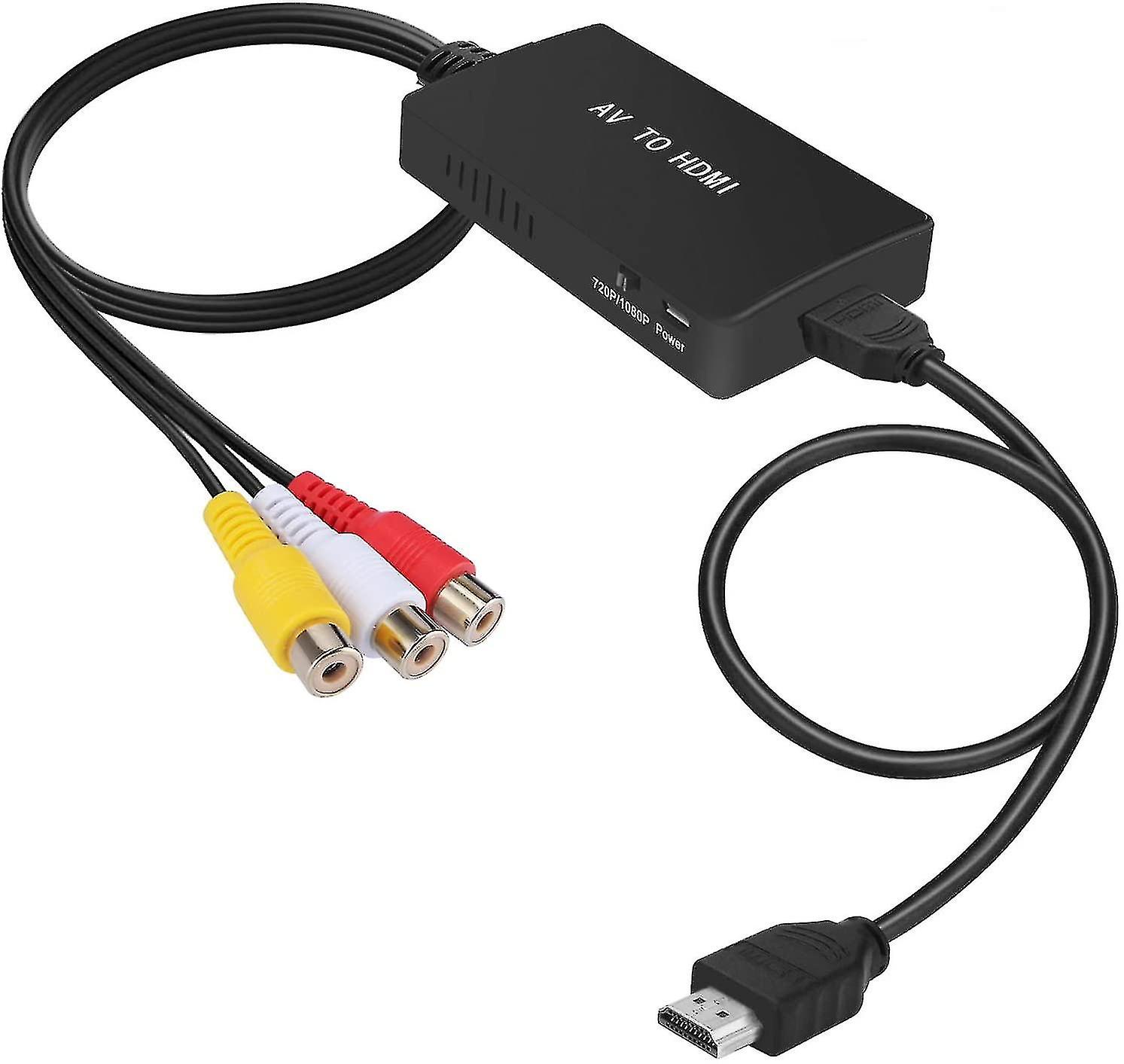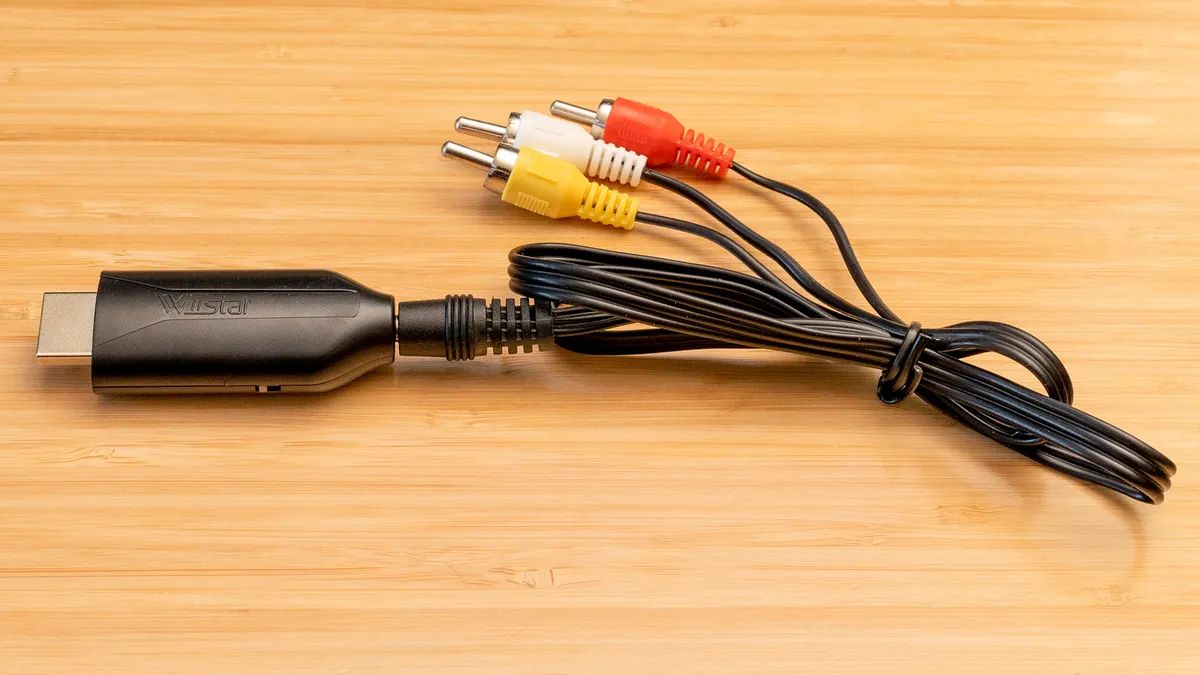Introduction
Welcome to a world where entertainment and technology seamlessly merge, where audio and video signals are transmitted with unparalleled clarity and efficiency. One of the key players in this convergence is High-Definition Multimedia Interface, more commonly known as HDMI. If you’ve ever wondered what HDMI is and what its output entails, you’re in the right place.
HDMI has revolutionized the way we connect and transmit audiovisual signals. From televisions to gaming consoles, HDMI has become the go-to standard for high-quality, digital audio and video transmission. But what exactly is HDMI and how does it work?
HDMI, an acronym for High-Definition Multimedia Interface, is a proprietary interface used for transmitting uncompressed video and audio data between compatible devices. Unlike older analog connections such as VGA or RCA, HDMI transmits digital signals, resulting in superior image and sound quality.
HDMI cables are easily recognizable by their distinctive rectangular connectors, which come in various sizes ranging from standard to micro and mini. These cables carry both audio and video signals, eliminating the need for separate audio cables. This simplicity and versatility have made HDMI the de facto standard for connecting devices such as televisions, projectors, Blu-ray players, game consoles, and computers.
With HDMI, you can enjoy the highest quality of high-definition content, whether it’s watching your favorite movies, playing immersive video games, or viewing stunning visuals on a large screen. But the wonders of HDMI go beyond just picture and sound quality.
Stay tuned as we explore the intricacies of HDMI and delve into the fascinating world of HDMI output. From the different types of devices that utilize HDMI, to the benefits it offers, and even the common issues you may encounter, this article will be your comprehensive guide to understanding HDMI output.
What is HDMI?
HDMI, short for High-Definition Multimedia Interface, is a digital interface technology that allows for the transmission of high-quality audio and video signals between devices. It was first introduced in 2003 by a consortium of leading electronics manufacturers, including Sony, Philips, Panasonic, and Toshiba.
Prior to HDMI, audio and video signals were typically transmitted using separate cables, such as composite, component, or S-video. These analog connections suffered from signal degradation and limited resolution capabilities. HDMI, on the other hand, revolutionized the audiovisual industry by providing a single cable solution for transmitting superior digital signals.
One of the primary advantages of HDMI is its ability to transmit uncompressed signals. Unlike analog connections that convert signals into electrical pulses, HDMI carries digital signals in their original form. This results in a lossless transmission, ensuring that the audio and video quality remains uncompromised from the source device to the display.
HDMI also offers support for various audio formats, including uncompressed PCM, Dolby Digital, DTS, and more. This versatility allows for a captivating audio experience, whether you’re listening to a cinematic soundtrack or immersing yourself in a virtual gaming world.
Over the years, HDMI has evolved to keep pace with the advancements in audiovisual technology. The latest version, HDMI 2.1, supports higher resolutions, faster refresh rates, and greater bandwidth. This means that HDMI can handle the demanding requirements of 4K and even 8K video content, delivering crystal-clear images and smooth motion.
Furthermore, HDMI has become more than just a cable connection. It has expanded to include additional features such as Ethernet connectivity, allowing devices to share an internet connection without the need for separate cables. HDMI also supports Consumer Electronics Control (CEC), enabling devices to be controlled with a single remote.
In summary, HDMI is a digital interface technology that revolutionized the way audio and video signals are transmitted. With its uncompressed signal transmission, support for various audio formats, and compatibility with high resolutions, HDMI has become the industry standard for connecting devices and providing an immersive multimedia experience.
How does HDMI work?
Understanding how HDMI works requires a basic knowledge of digital signals and the components involved in the transmission process. At its core, HDMI converts audio and video signals into digital information that can be transmitted and decoded by compatible devices.
When you connect a source device, such as a Blu-ray player or a gaming console, to a display device, such as a television or a projector, using an HDMI cable, the transmission process begins. The HDMI cable acts as a conduit for the digital signals.
The source device converts the audio and video data into digital format and encrypts it to ensure secure transmission. This encrypted digital signal is then sent through the HDMI cable to the receiving device.
Upon receiving the digital signal, the receiving device, typically a television or a display monitor, decrypts the data and converts it back into audio and video signals. The device then processes these signals and displays the content on the screen, allowing you to enjoy your favorite movies, TV shows, or video games.
One notable feature of HDMI is its ability to carry both audio and video signals in a single cable. This eliminates the need for multiple cables and simplifies the connection process. HDMI supports various audio formats, allowing for high-quality sound reproduction, whether you’re listening to dialogue, music, or immersive sound effects.
Moreover, HDMI offers support for different video resolutions, from standard definition (SD) to high definition (HD), and even the latest Ultra High Definition (UHD) or 4K resolutions. The HDMI interface ensures that the audio and video signals are synchronized, resulting in seamless playback without any noticeable delay or latency.
HDMI also incorporates advanced features to enhance the overall multimedia experience. For instance, HDMI 2.1 introduced features like Variable Refresh Rate (VRR), which reduces screen tearing in fast-paced video games, and Auto Low Latency Mode (ALLM), which automatically enables the low latency mode for gaming. These features cater to the specific demands of gamers and enhance the gameplay experience.
In summary, HDMI works by converting audio and video signals into digital data, encrypting it for secure transmission, and conveying it through an HDMI cable to a receiving device. The receiving device then decrypts and processes the digital data, transforming it back into audio and video signals for display. With support for various audio formats, video resolutions, and additional features, HDMI offers a seamless and immersive multimedia experience.
Types of HDMI devices
HDMI technology has become widely adopted across a range of devices, providing a standardized and versatile interface for high-quality audio and video transmission. Let’s explore some of the different types of devices that utilize HDMI connectivity.
1. Televisions and Monitors: One of the most common devices that use HDMI is televisions, including both LCD and OLED models. HDMI allows for seamless connectivity between media sources such as Blu-ray players, set-top boxes, streaming devices, and gaming consoles. Monitors, especially those designed for gaming or multimedia purposes, also often utilize HDMI to deliver high-resolution visuals.
2. Blu-ray Players and DVD Players: HDMI is a crucial connection for Blu-ray players, providing the necessary bandwidth to transmit high-definition video and lossless audio. DVD players with HDMI output also benefit, as they can upscale standard-definition content to higher resolutions for a better viewing experience.
3. Gaming Consoles: Modern gaming consoles, such as the PlayStation and Xbox series, rely heavily on HDMI connectivity. HDMI enables the transmission of high-resolution graphics, immersive surround sound, and low-latency gameplay, ensuring a captivating gaming experience.
4. Home Theater Systems: Audio/Video receivers and home theater systems often feature HDMI inputs and outputs. This allows for the connection of various media sources, such as Blu-ray players, gaming consoles, and set-top boxes, to deliver immersive sound and video to multiple speakers and a display.
5. Media Streaming Devices: Devices like Apple TV, Roku, Chromecast, and Amazon Fire TV Stick utilize HDMI to connect to televisions or monitors. These devices enable streaming services, allowing users to access a wide range of digital content with ease.
6. Laptops and Computers: Many laptops and desktop computers come equipped with HDMI ports, providing an easy way to connect to external displays, projectors, or televisions. With HDMI, you can extend your desktop, mirror your screen, or enjoy multimedia content on a larger display.
7. Digital Cameras and Camcorders: Some digital cameras and camcorders feature HDMI outputs, allowing for direct playback on high-definition televisions or monitors. This enables users to view and share their captured photos and videos with exceptional clarity.
These are just a few examples of the wide range of devices that incorporate HDMI connectivity. Whether it’s for entertainment, gaming, professional presentations, or audiovisual systems, HDMI has become the go-to interface for seamless and high-quality audio and video transmission.
HDMI Output: What does it mean?
When we talk about HDMI output, we are referring to the capability of a device to transmit audio and video signals through an HDMI connection to an external display device, such as a television, monitor, or projector. HDMI output is a fundamental feature found in various devices, encompassing a multitude of applications and benefits.
HDMI output allows for the seamless and high-quality transmission of audio and video signals from a source device to a display device. This means that you can connect devices like gaming consoles, Blu-ray players, laptops, or even smartphones to a larger screen, enabling you to enjoy your favorite content with enhanced visual clarity and immersive sound.
The digital nature of HDMI ensures a lossless transmission of signals, preserving the original audio and video quality from the source device. This fidelity results in sharper images, vibrant colors, and immersive sound reproduction, taking your viewing or gaming experience to a whole new level.
Moreover, HDMI output provides the convenience of a single cable connection. With just one HDMI cable, you can transmit both audio and video signals, eliminating the need for separate cables and simplifying the setup process.
HDMI output is also versatile when it comes to resolutions. From standard-definition to high-definition and even the latest 4K or 8K resolutions, HDMI can accommodate various display capabilities, ensuring compatibility with a wide range of devices and delivering stunning visuals on the screen.
Another advantage of HDMI output is the support for multiple audio channels, including surround sound formats like Dolby Atmos and DTS:X. This capability enhances the cinematic or gaming experience by providing immersive and directional audio, allowing you to hear details that bring the content to life.
It’s worth noting that HDMI output is bidirectional, meaning it can transmit signals from the source device to the display device, as well as receive signals from the display device back to the source device. This bidirectional functionality enables features like audio return channel (ARC) and HDMI-CEC (Consumer Electronics Control), allowing for simplified control of connected devices and audio playback through the same HDMI cable.
Overall, HDMI output is a critical feature that enables the seamless transmission of audio and video signals from source devices to external displays. With its high-quality digital transmission, support for various resolutions, and versatility in audio formats, HDMI output enhances the visual and auditory experience, making it a must-have technology for modern multimedia applications.
Benefits of HDMI Output
HDMI output offers a multitude of benefits that make it the preferred choice for audio and video transmission. Let’s explore some of the key advantages of using HDMI output in various devices:
1. High-Quality Audio and Video: HDMI output ensures the transmission of high-quality, uncompressed audio and video signals. This results in sharper images, vibrant colors, and immersive sound, providing a truly superior audiovisual experience.
2. Simplified Connection: With HDMI output, you only need a single cable to transmit both audio and video signals between devices. This eliminates the clutter of multiple cables, simplifies the setup process, and reduces the hassle of managing different connectors.
3. Versatile Resolutions: HDMI output supports a wide range of resolutions, including standard definition (SD), high definition (HD), and the latest 4K and 8K resolutions. This versatility ensures compatibility with various display devices and allows for a visually stunning viewing experience.
4. Seamless Integration: HDMI output promotes seamless integration between different devices. Whether it’s connecting a gaming console to a television or a laptop to a monitor, HDMI ensures a smooth and hassle-free connection, allowing for quick and easy setup.
5. Enhanced Audio Formats: HDMI output supports advanced audio formats, including surround sound and high-resolution audio. This enables a truly immersive audio experience, whether you’re watching a movie, playing a video game, or listening to music.
6. Bidirectional Functionality: HDMI output is bidirectional, allowing for two-way communication between devices. This enables features like audio return channel (ARC), which allows audio to be sent from the TV back to an audio receiver, eliminating the need for additional audio cables.
7. Additional Features: HDMI output incorporates additional features that enhance the overall user experience. This includes support for Ethernet connectivity, allowing devices to share an internet connection, as well as Consumer Electronics Control (CEC), which enables control of multiple devices with a single remote.
8. Compatibility: HDMI output is widely adopted across a variety of devices, making it highly compatible. From televisions and Blu-ray players to gaming consoles and computers, you’ll find HDMI ports on a wide range of devices, ensuring easy connectivity and compatibility.
9. Future-Proof Technology: HDMI continually evolves to keep up with technological advancements. New versions of HDMI introduce features like higher resolutions, enhanced bandwidth, support for HDR content, and improved audio capabilities, making HDMI a future-proof technology.
In summary, HDMI output provides a plethora of benefits, including high-quality audio and video transmission, simplified connection setup, support for versatile resolutions, seamless integration between devices, advanced audio formats, bidirectional functionality, added features, compatibility, and future-proof technology. With these advantages, HDMI output ensures a superior audiovisual experience across a wide range of applications.
Different HDMI Output Resolutions
HDMI supports a wide range of resolutions, allowing for the transmission of various levels of visual detail and clarity. Different HDMI output resolutions cater to different needs and display capabilities, ensuring compatibility with a variety of devices. Let’s explore some of the common HDMI output resolutions:
1. Standard Definition (SD): SD resolution refers to the traditional resolution used in older televisions and video content. It typically has a resolution of 480i, with an aspect ratio of 4:3. While SD may not deliver the same level of detail as higher resolutions, it can still be suitable for certain devices and content.
2. High Definition (HD): HD resolutions offer significantly improved visual quality over SD. The most common HD resolution is 720p, which has a resolution of 1280×720 pixels. This allows for sharper images and smoother video playback, making HD ideal for TVs, gaming consoles, and streaming devices.
3. Full HD (FHD): Full HD resolution, also known as 1080p, provides even greater visual detail. With a resolution of 1920×1080 pixels, FHD delivers crisp images and precise color reproduction. It is widely used in Blu-ray players, gaming consoles, and high-end televisions to showcase content with exceptional clarity.
4. Ultra High Definition (UHD) or 4K: UHD or 4K resolution offers four times the pixel count of 1080p, resulting in incredibly sharp and detailed images. It has a resolution of 3840×2160 pixels, providing a visually stunning experience. UHD is increasingly common in televisions, monitors, and media players, allowing for a more immersive viewing experience.
5. 8K: The latest advancement in HDMI output resolutions is 8K. With an impressive resolution of 7680×4320 pixels, 8K delivers unparalleled levels of detail and clarity. However, 8K displays are still relatively limited, and it may take some time for the content and devices supporting this resolution to become widely available.
It’s important to note that the display device must support the HDMI output resolution to ensure compatibility. Generally, devices that support higher resolutions, such as UHD or 8K, will also be backward compatible with lower resolutions, allowing for seamless playback of content across different devices.
Additionally, HDMI output resolutions can be further enhanced with additional features like High Dynamic Range (HDR), which expands the color and contrast range for even more vibrant and lifelike visuals. HDR is becoming increasingly popular in conjunction with higher resolutions, further enhancing the viewing experience.
In summary, HDMI supports a range of resolutions, from SD to HD, Full HD, UHD, and even 8K. These resolutions accommodate different display capabilities and cater to various needs, ensuring compatibility with a wide range of devices. With each advancement in resolution, the visual experience becomes more immersive, delivering stunning details and lifelike imagery.
Understanding HDMI Output Ports
HDMI output ports are essential components on devices that support HDMI connectivity. These ports provide the interface through which audio and video signals are transmitted to external display devices. Understanding HDMI output ports is key to ensuring proper connection and compatibility with different devices. Let’s delve into the details:
1. Types of HDMI Ports: HDMI output ports come in different sizes and shapes to accommodate various devices. The most common types are standard HDMI, mini HDMI, and micro HDMI. Standard HDMI ports are the largest and are typically found on televisions, receivers, and other home theater equipment. Mini HDMI ports are smaller and are commonly found on some cameras and tablets. Micro HDMI ports are the smallest and are usually found on smartphones and portable devices.
2. Compatibility: When connecting devices with different HDMI port types, it is crucial to use the appropriate HDMI cable or an adapter. For example, to connect a device with a mini HDMI port to a display or receiver with a standard HDMI port, a mini HDMI to standard HDMI cable or adapter is needed. Ensuring compatibility between the HDMI output port on the source device and the HDMI input port on the display device is vital for a successful connection.
3. HDCP Support: High-Bandwidth Digital Content Protection (HDCP) is a feature that ensures secure transmission of copyrighted content over HDMI connections. HDMI output ports typically support HDCP, allowing for the transmission of protected content from the source device to the display device. This feature is crucial for streaming services, Blu-ray playback, and other DRM-protected content.
4. Audio Return Channel (ARC): Some HDMI output ports support the Audio Return Channel feature. ARC enables audio to be sent from the display device back to the source device through the HDMI cable, eliminating the need for a separate audio connection. This simplifies the setup, particularly when connecting a TV to an audio receiver or soundbar.
5. Multiple HDMI Output Ports: Some devices, such as high-end audio/video receivers or media players, may feature multiple HDMI output ports. These additional ports offer flexibility for connecting multiple display devices simultaneously or for routing audio and video signals to different destinations within a complex audiovisual setup.
6. Hot Plug Detection: HDMI output ports are designed with hot plug detection, allowing for automatic detection and configuration of devices when they are connected or disconnected. This ensures seamless connectivity and avoids the need for manual adjustments when devices are added or removed from the HDMI chain.
Understanding the different aspects of HDMI output ports is essential for establishing proper connections and achieving optimal performance. Compatibility between HDMI port types, support for HDCP and ARC, and the use of appropriate cables or adapters are crucial factors to consider when connecting devices. Properly utilizing HDMI output ports ensures a seamless audiovisual experience and enables the enjoyment of high-quality, digital content on external displays.
Common HDMI Output Issues
While HDMI technology offers seamless audiovisual transmission, like any technology, it can encounter issues. Being aware of common HDMI output issues can help troubleshoot and resolve problems that may arise. Here are some of the most common issues:
1. No Signal: This is one of the most common HDMI output issues. When there is no signal, it usually indicates a loose or faulty HDMI connection. Ensure that the HDMI cable is securely plugged into both the source device and the display device. Additionally, verify that the correct input source is selected on the display device.
2. Intermittent Signal or Flickering: Intermittent signal or flickering can occur due to a faulty HDMI cable or incompatible devices. Try using a different HDMI cable or swapping HDMI ports on the devices to see if the issue persists. It can also be caused by outdated firmware on one or both devices, so ensure that all devices are up to date.
3. HDCP Errors: High-Bandwidth Digital Content Protection (HDCP) errors can prevent the playback of certain DRM-protected content. If you encounter HDCP errors, ensure that all devices in the HDMI chain support HDCP and that the firmware is up to date. If the issue persists, try disconnecting and reconnecting all HDMI cables and power cycling the devices.
4. Resolution and Display Issues: HDMI output resolution and display issues can occur if the display device does not support the resolution being transmitted. Ensure that the display device is compatible with the HDMI output resolution of the source device. If necessary, adjust the resolution settings on the source device to match the capabilities of the display device.
5. Audio Issues: Problems with audio can range from no sound to distorted or low-quality audio. Check the audio settings on both the source and display devices to ensure that the correct audio output is selected. Also, verify that the HDMI cable is securely connected to both devices. If the issue persists, try using a different HDMI cable or connecting the audio output separately using alternative audio connections.
6. Compatibility Issues: HDMI output issues can also arise due to compatibility problems between devices. Ensure that all devices in the HDMI chain, including the source device, cables, and display device, are HDMI-compliant and support the required features. Refer to the device specifications and user manuals for compatibility information.
7. CEC and Control Issues: HDMI devices often support Consumer Electronics Control (CEC), which allows for control of multiple devices with a single remote. However, CEC compatibility issues or incorrect settings can lead to control problems. Review the CEC settings on each device and ensure that they are properly configured to enable seamless control.
When encountering HDMI output issues, it’s helpful to isolate the problem by testing different components, cables, and settings. Ensure that all devices have the latest firmware updates and consult the user manuals or seek technical support from the manufacturers if necessary. By troubleshooting and addressing common HDMI output issues, you can optimize the audiovisual experience and enjoy uninterrupted, high-quality content on your display device.
Conclusion
HDMI has revolutionized the way we connect and transmit audiovisual signals, providing a seamless and high-quality experience in our digital world. Understanding HDMI and its output capabilities is essential for maximizing the potential of our devices and enjoying immersive multimedia content.
HDMI, which stands for High-Definition Multimedia Interface, enables the transmission of uncompressed audio and video signals between compatible devices. With its digital nature, HDMI ensures lossless signal transmission, resulting in superior image and sound quality. It simplifies the connection process by combining both audio and video signals into a single cable, eliminating clutter and reducing setup time.
By supporting various resolutions, from standard definition to high definition, Ultra HD, and even the latest 8K resolutions, HDMI accommodates different display capabilities and delivers stunning visuals. HDMI output also caters to audio enthusiasts, providing support for advanced audio formats and surround sound technologies.
The versatility of HDMI output extends to a wide range of devices, including televisions, Blu-ray players, gaming consoles, laptops, cameras, and more. HDMI output ports come in different sizes, and compatibility can be ensured through the use of appropriate cables or adapters.
While HDMI provides a seamless audiovisual experience, common issues can arise, such as no signal, intermittent signal, HDCP errors, resolution or display issues, audio problems, and compatibility issues. Troubleshooting these issues involves checking connections, updating firmware, adjusting settings, and ensuring compatibility between devices.
In conclusion, HDMI output is a fundamental aspect of modern audiovisual technology, enabling high-quality transmission of audio and video signals. It simplifies connectivity, delivers stunning visuals and immersive sound, and enhances the overall multimedia experience. By understanding HDMI and its output capabilities, as well as troubleshooting common issues, we can fully harness the potential of our devices and enjoy the best audiovisual content in our homes and beyond.

























